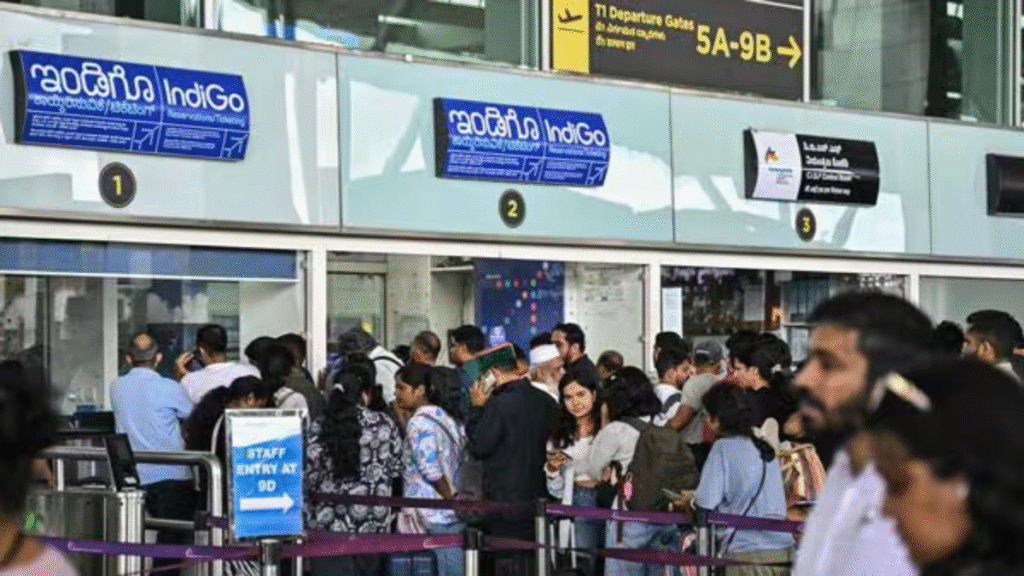Now Reading: Big Relief on the Horizon: Middle Class to See Cheaper Toothpaste, Utensils, Clothes, and Shoes as GST Rates Undergo Review
-
01
Big Relief on the Horizon: Middle Class to See Cheaper Toothpaste, Utensils, Clothes, and Shoes as GST Rates Undergo Review
Big Relief on the Horizon: Middle Class to See Cheaper Toothpaste, Utensils, Clothes, and Shoes as GST Rates Undergo Review

In a significant move aimed at easing the financial burden on middle and lower-income households, the Indian government is reportedly on the verge of announcing substantial reductions in Goods and Services Tax (GST) rates for a wide array of everyday necessities. Following earlier income tax concessions, this anticipated GST relief is set to make common household items like toothpaste, kitchen utensils, clothing, and footwear more affordable, potentially stimulating consumption and offering a much-needed boost to the economy.
Sources close to the Ministry of Finance indicate that the Centre is actively considering a complete overhaul of the existing GST slab structure. A key proposal gaining traction is the elimination of the 12% GST slab entirely, with many of the items currently categorized under this bracket likely to be reclassified into the lower 5% slab. This strategic recalibration targets goods predominantly used by the middle class and economically weaker sections, aiming to directly impact their disposable income.
Among the items expected to see price drops are essential personal care products such as toothpaste and tooth powder. Household appliances and kitchenware, including pressure cookers, electric irons, geysers, small-capacity washing machines, and various kitchen utensils, are also on the list for potential GST reduction. Furthermore, commonly used items like umbrellas, sewing machines, bicycles, and even certain stationery items like exercise books and geometry boxes could become cheaper.
The textile and footwear sectors are also slated for significant relief. Readymade garments priced above ₹1,000 and footwear costing between ₹500 and ₹1,000 are expected to move into a lower tax bracket, providing a welcome respite for consumers. Certain vaccines and diagnostic kits, crucial for public health, are also reportedly under consideration for tax reduction, underscoring the government’s focus on essential goods and services.
While the proposed changes are expected to put an initial burden of approximately ₹40,000 crore to ₹50,000 crore on the government exchequer, officials believe this will be offset by an anticipated surge in consumption. The rationale is that lower prices will drive higher sales volumes, ultimately expanding the tax base and leading to increased GST collections in the long run. Finance Minister Nirmala Sitharaman has previously hinted at the government’s intent to rationalize and simplify the GST structure, emphasizing a more equitable and user-friendly tax system for everyday items.
The highly anticipated 56th GST Council meeting, expected to be convened later this month, will be the decisive forum for these proposed changes. However, achieving consensus among states remains crucial, as any alteration in GST rates requires approval from the GST Council, where each state holds voting rights. Reports suggest that some states, including Punjab, Kerala, Madhya Pradesh, and West Bengal, have expressed reservations, highlighting the complexities involved in reaching a unanimous decision. Historically, the Council has largely operated on consensus, with voting being a rare occurrence.
Since its implementation in 2017, the GST regime has aimed to streamline India’s indirect tax system. While it has brought about significant improvements in tax compliance and ease of doing business, the multi-tiered rate structure has often been a point of contention. The current move towards rate rationalization, particularly the potential elimination of the 12% slab, is seen as a major step towards simplifying the tax framework and directly benefiting the common citizen. If approved, these reductions could translate into tangible savings for millions of households, making daily living more affordable and potentially igniting a new wave of economic activity. The nation awaits the decisions from the upcoming GST Council meeting with keen anticipation, hopeful for a brighter and more economical future.










